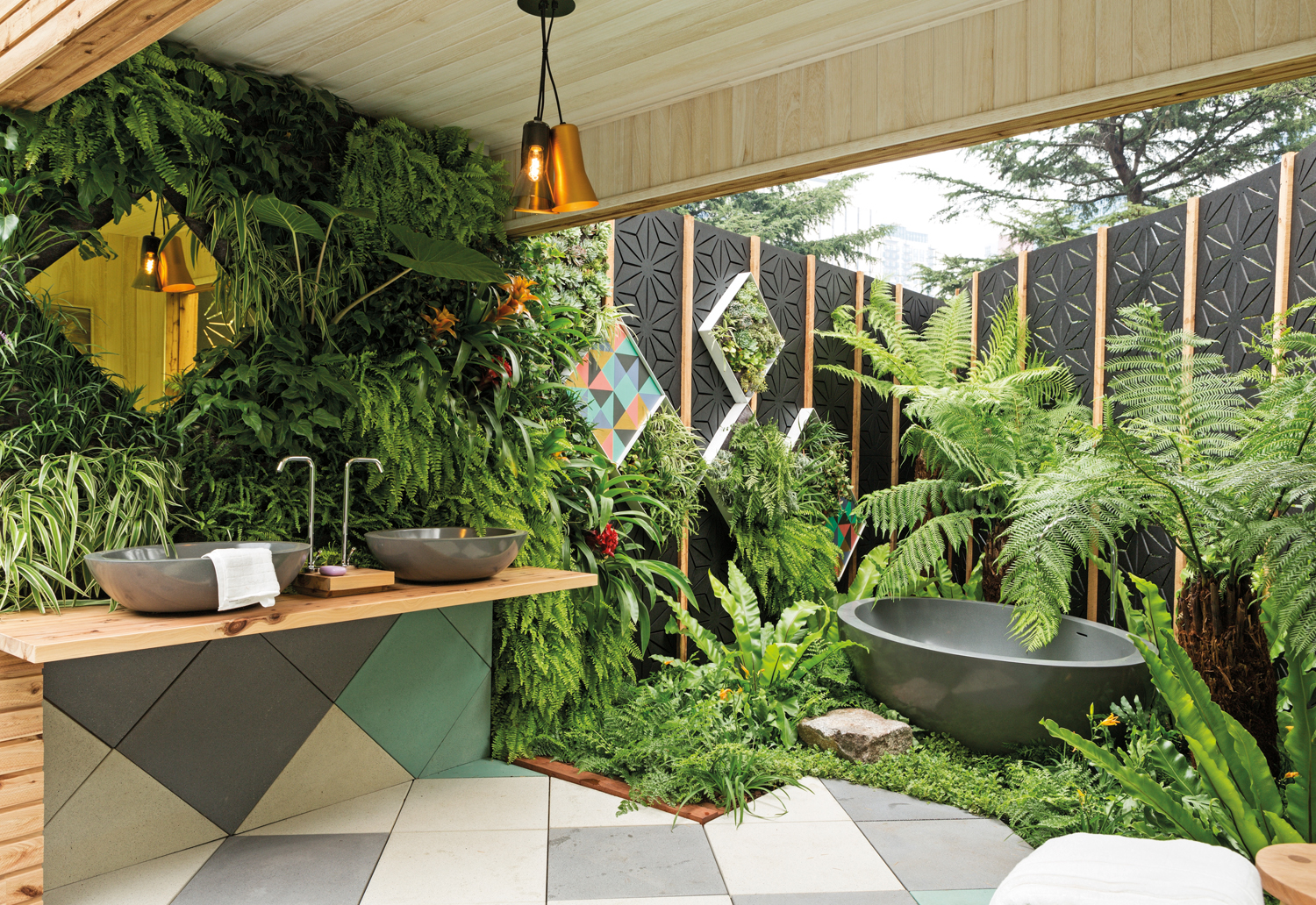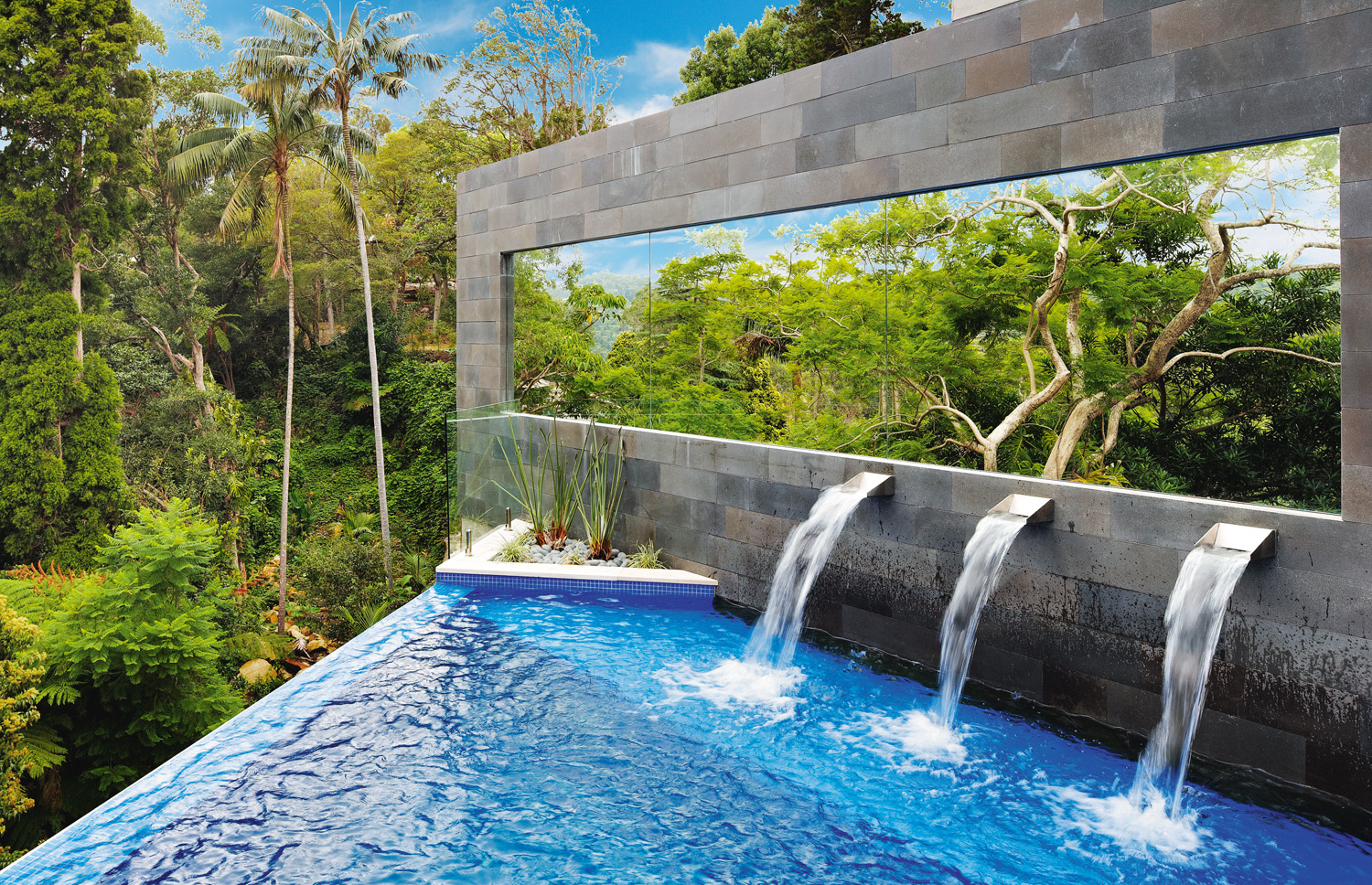Natural stone has long been admired for its durability and aesthetic appeal
Adding character and style to your outdoor space can be achieved with authentic natural stone. The matchless variations of colour and texture within stone will provide a classic look to outdoor areas that is visually interesting and impossible to replicate, making it unique to your space.
Stone is a safe and appropriate surfacing material for hard landscaping that will not fade in extreme weather or wear under general use, remaining attractive and solid for years to come. And being a product of the earth, it is naturally eco-friendly and recyclable. “One significant benefit of using natural stone is the adaptability of the product to suit any home design, whether contemporary or traditional, providing a long-lasting, value-adding finish to the home”, says Andrew Lotter, Outdoor Product Manager of Amber Tiles.

An excellent choice for outdoor paving, pool coping, steps and floor tiling, stone is available in a range of types. Some of the most common include bluestone, limestone, granite, travertine, limestone, sandstone and slate. “All of our natural stones have been slip tested and are certified for use in pool surrounds and outdoor entertaining areas,” says Andrew. “Additionally, all of the Amber range of paving, which includes concrete, clay and the technically advanced porcelain paver range, also carries slip certifications.”
Bluestone
Bluestone is a form of basalt that is recognisable by its grey-blue tones, though it can demonstrate golden highlights. It is incredibly durable, hard-wearing and stain-resistant, making it eminently suitable for outdoor paving and cladding. Bluestone’s density and natural porosity also make it suitable for use in wet areas, such as around pools or outdoor bathrooms.
Granite
Granite is formed from liquid magma that is hardened over thousands of years under extreme pressure deep beneath the earth’s surface, making it incredibly durable and hard-wearing. Used for centuries as a structural building product, granite is available in a variety of colours, from greys and blues to creams. Different textures are created through a range of finishes, including sandblasted or honed, to offer varying options for use.
Granite is a dense, premium stone with attractive qualities, which makes it an ideal choice for use in either contemporary or traditional designs.
Limestone
Limestone is most notable for its natural shades of beige, ivory and white, but it can also be found in rarer grey and black tones. A popular building product for both indoor and outdoor applications, it is durable and less porous than other products, making it less susceptible to staining. Limestone offers individual character through the natural variations in its appearance and is most commonly used for paving, internal and external cladding, floor and wall tiles, and, due to its resistance to salt attack, is also a good choice for pool surrounds.
Sandstone
Sandstone has been used for centuries as a quality building material. A sedimentary stone formed beneath the earth, sandstone is moderately porous with a gritty texture, making it suitable for creating non-slip surfaces. To prevent staining, it should be properly sealed. Available in a range of neutral tones from gold to soft pinks, sandstone can be used for a range of applications including as pavers, steps and coping. Its timeless beauty is one of the reasons it’s so popular in both indoor and outdoor construction.
Travertine
A form of limestone, travertine has long been used for its regal air of elegance in a range of floor and wall applications. Due to its permeability and naturally high salt resistance, it is often recommended for use around swimming pools and wet areas. Possessing a high coefficient of friction, travertine is cool underfoot and offers a non-slip surface that makes outdoor spaces safer. It is found in a variety of finishes including polished, honed, brushed, saw-cut or tumbled. The natural shades of travertine can range from soft ivory and pale creamy white to rich golden shades of walnut and honey, silvery greens, rustic reds and deep mochas, depending on the area it originated from.
Slate
Slate is a dense, fine-grained sedimentary stone with similar properties to limestone and forms from shale-type rock composed of clay and volcanic ash. The result is a foliated, layered stone with a natural appearance that is frequently light and dark grey in colour with variations of purple, green, cyan and brown. Due to its low tendency to absorb water, slate is easy to maintain with or without the application of a sealer, making it a good choice for all high-use areas both indoors and out.
For more information










